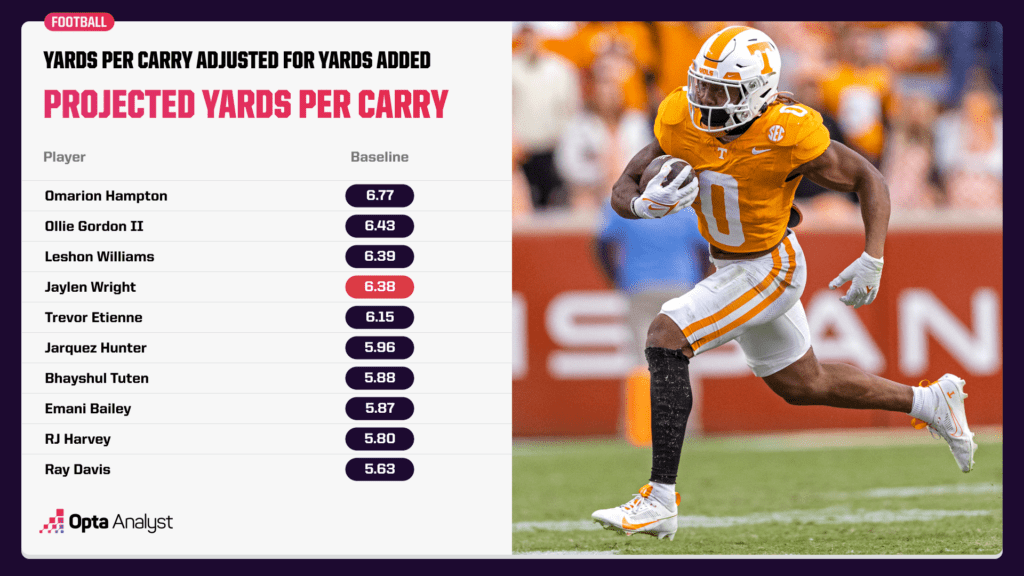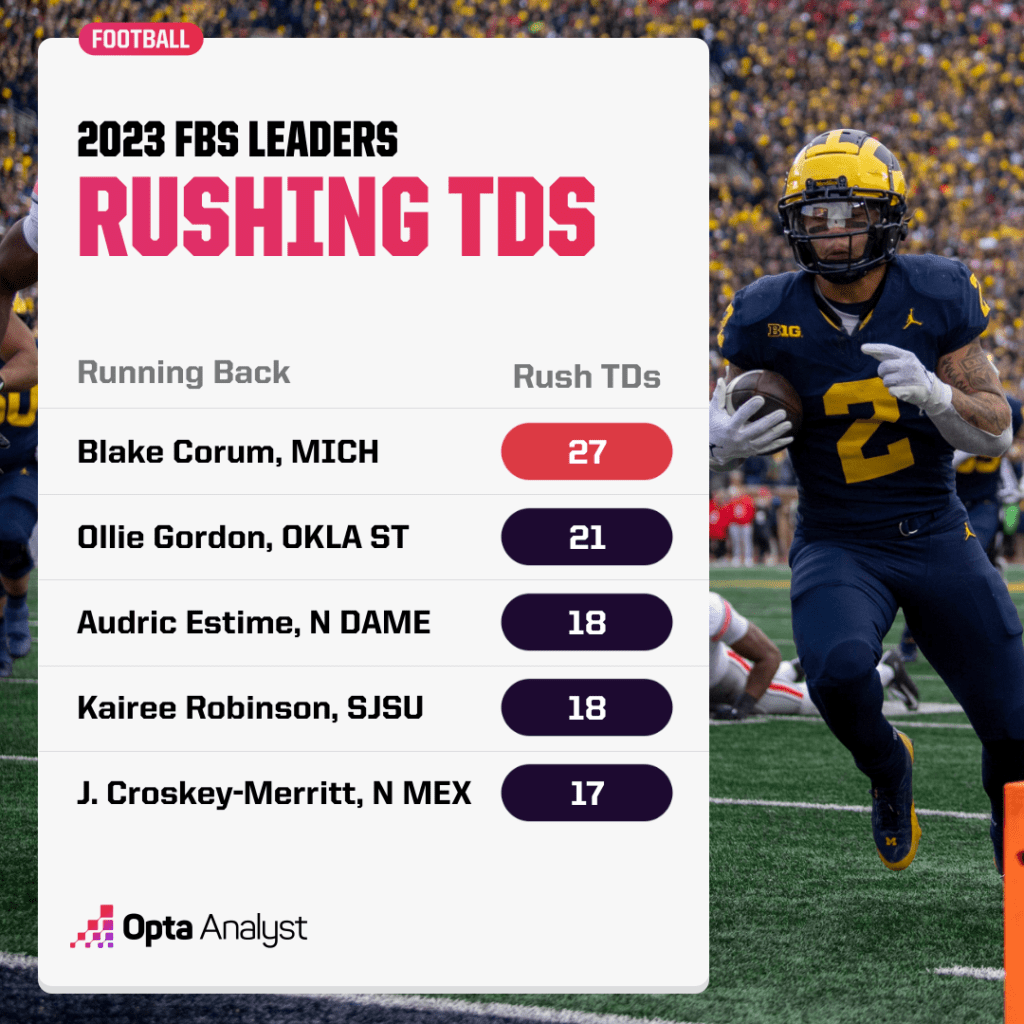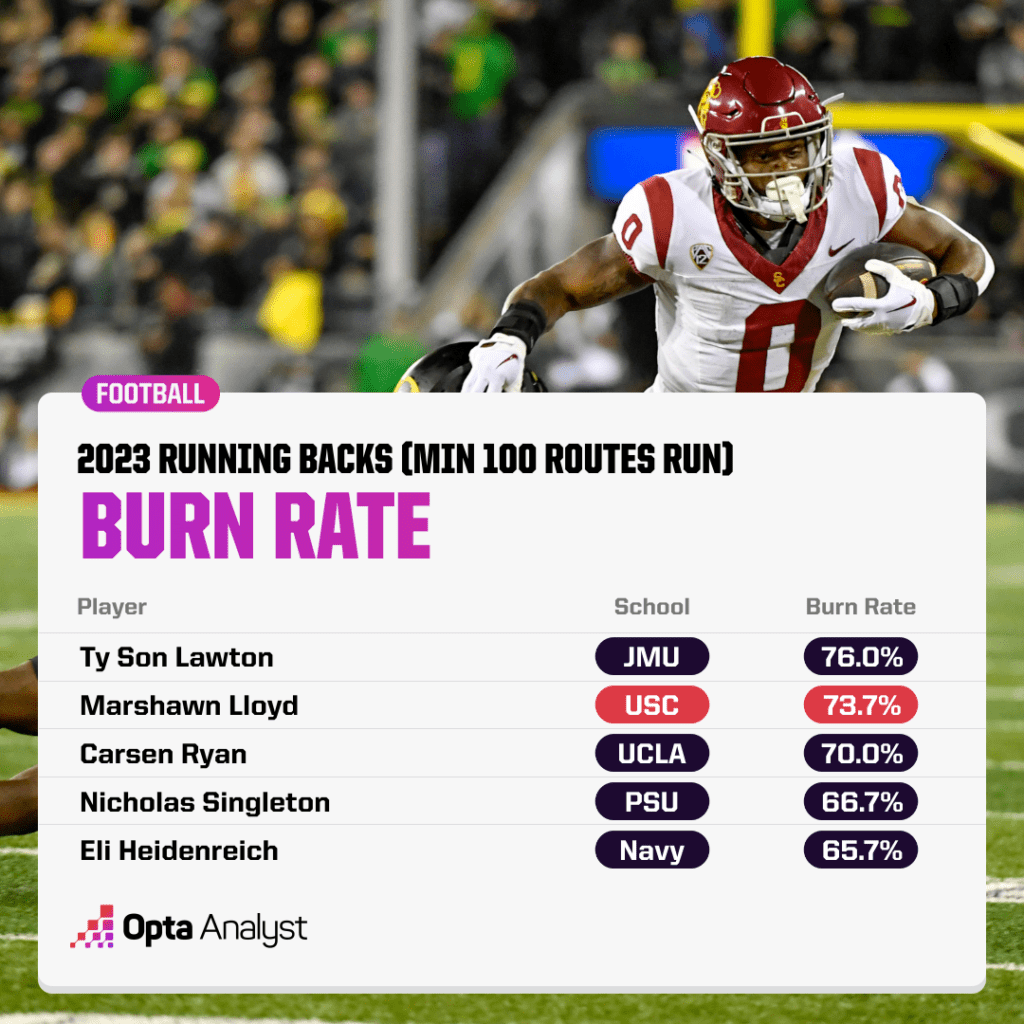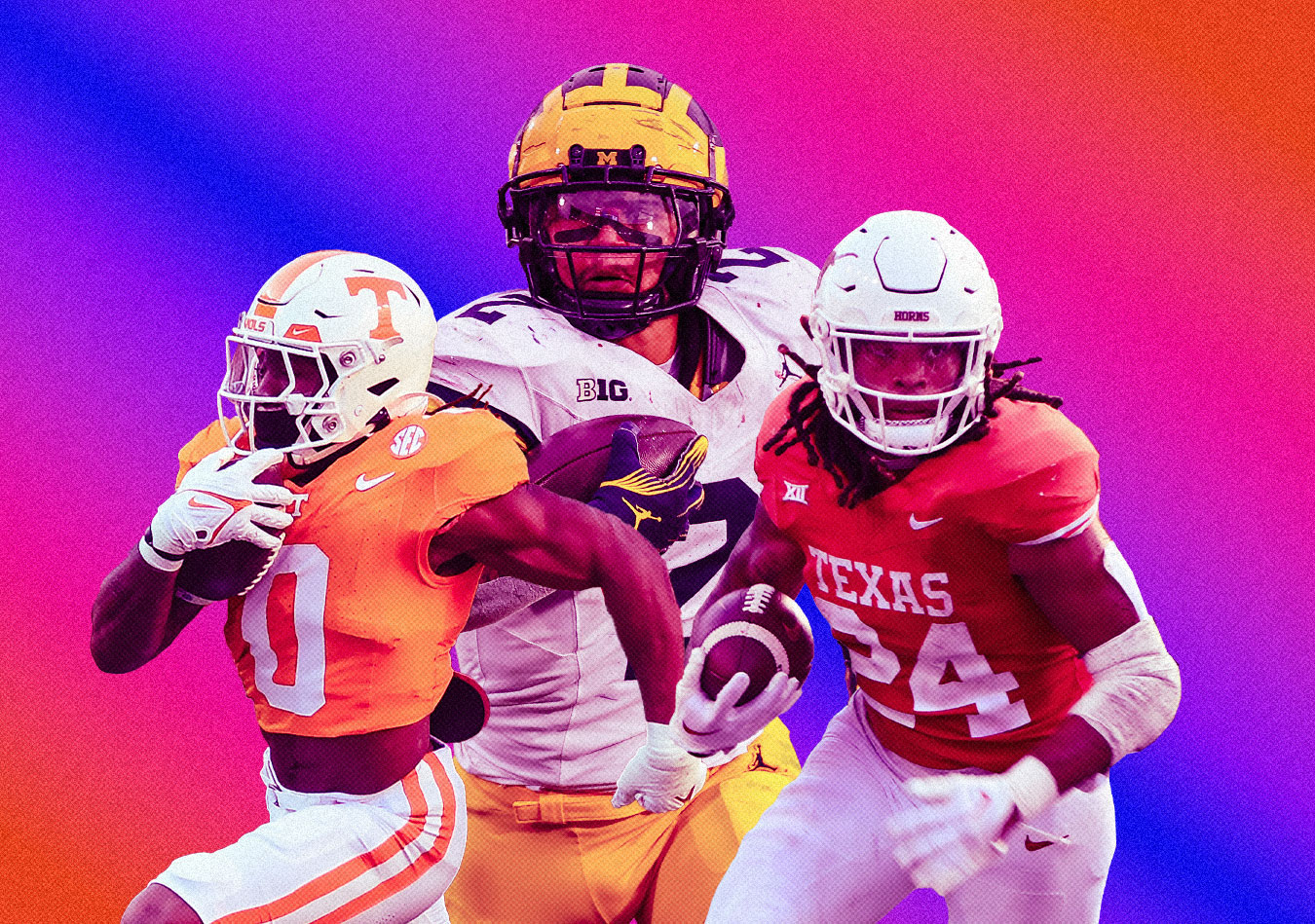The NFL still appreciates a special running back.
The question is, does one exist among the 2024 NFL Draft prospects?
This may not be considered a big draft year at the position, but one of the lessons of this offseason’s free agency was teams will still invest in running backs if they think they’ll move the needle. Four of them, led by Saquon Barkley with the Philadelphia Eagles, signed contracts with eight-figure guarantees.
With the right mix of youth and track record, teams still pay a pretty penny. Last year’s draft told the same story, as Bijan Robinson (Atlanta Falcons) and Jahmyr Gibbs (Detroit Lions) were both picked in the top 12 of the first round.
No running back will go nearly that high in this year’s draft, and it’s possible none will be selected in the first round. But the backfield class is deep, with a big handful of ball carriers and route runners who could have productive NFL careers.
The three-day draft is set for April 25-27 in Detroit. The Dallas Cowboys, Las Vegas Raiders, Los Angeles Chargers and New York Giants are some of the NFL teams considered to be in the market for a running back.
Which running backs have the best chance? Our game-charting data can help determine where each might fit best in an NFL offense.
There were 146 FBS running backs with at least 50 carries in the 2023 college football season who were tracked for something specific – added yards.
It’s become popular to keep track of running back yardage before and after contact, but those figures have limits: If a ball carrier simply makes a defender miss and never gets touched, he isn’t credited with a single yard after contact.
At the same time, we might not know much about yards before contact. How many were determined by great blocking or an offensive scheme, and how many were down to the running back’s own elusiveness?
By tracking yards after the first encounter with a defender rather than limiting to first contact, we can better understand the contributions of NFL Draft running back prospects.
Jaylen Wright, Tennessee
Wright, who according to some NFL Draft evaluations is the top back in the class, is a superstar of the added-yards statistic. From his first encounter with a defender, he averaged another 4.66 yards per carry on runs when he faced a solo tackler – 11th among the 146 qualifying running backs.

Also, the 5-foot-10½, 210-pound Wright, whose 4.38-second clocking in the 40-yard dash at the 2024 NFL Combine was second among running backs, fared well even when defenders got their hands on him last season. His 3.39-yards-after-contact average put him tops among the 30 rushers who appear most frequently in NFL mock draft rankings.
Wright benefited from interacting with smaller groups of defenders who would naturally have a harder time bringing him down. Playing in Tennessee’s deep ball-heavy spread offense, his bad box percentage (25.2) was the lowest in the FBS running back class. With no more than seven defenders lined up in the defensive box, Wright got less resistance than many of his peers.
Blake Corum, Michigan
Corum is an eternal Michigan legend, having been an effective starter for three years in an offense that prioritized the run and eventually delivered a national championship.
At first glance, our numbers don’t love him. His 2.47-yard clip of added yards from the first encounter with a defender was below average, and so was his 2.08-yard average after contact.
Of course, context matters, and that’s where the data is friendly to Michigan’s workhorse, who finished in the top 10 in rushes and led the FBS in rushing touchdowns.

Unlike Wright, the 5-8, 205-pound Corum saw loaded boxes frequently, facing a bad box percentage of 53.1 — third-highest in the FBS running back class. Opposing defenses knew Michigan was run-first over the pass, and they sold out near the line to confront Wolverines blockers. Corum’s 3.01-yard average before contact was a far cry from Wright’s 4.2, which led the qualifiers in the class.
Corum’s 4.8 rushing yards per carry last season was his worst in three years as the Wolverines’ starter, but he also took on a massive workload, with a 58.8% usage rate that ranked second in the class.
And when the Wolverines needed yards, they trusted Corum to get them. A team wouldn’t run the ball 32 times in a row at Penn State unless it had supreme belief in its tailback.
MarShawn Lloyd, USC
Lloyd’s numbers scream he could be an invaluable third-down back at the next level.
He’s listed at 5-9, 210 pounds, and was somewhat a role player when considering his 35.8% usage rate (on just 116 carries) was easily the lowest among RB prospects who could be selected in the draft. When you have a tiny running back and your quarterback is Caleb Williams, you’ll only hand the ball off so many times.

But Lloyd was slippery, and USC coach Lincoln Riley was adept at getting him into green grass to utilize his explosiveness. His 7.1 yards per carry ranked in the top five in the FBS, and his 5.26 yards before contact and 0.359 missed or broken tackles per touch were No. 1 in the upper tier’s class of draft prospects.
Lloyd averaged just 1.58 yards before encountering a defender, suggesting he was incredible at keeping tacklers away from him and not letting them get a finger on him until he was into the second level of the defense. More than that, he showed versatility as a brilliant route runner in the passing game: His 73.7% “burn” rate on receiving routes was second among the qualifying FBS running backs in the draft class.
While Lloyd won’t play on every down, a creative offensive coach will get a lot of out of his quickness as a runner and receiver.
Audric Estime, Notre Dame
Estime is a classic featured back from another era. His 60.2% usage rate was tops in the class, as he carried 210 times for a Notre Dame offense that was determined to use him as a battering ram behind a gap-blocking offensive line.
Teams knew the Fighting Irish had that exact plan, so Estime faced heavy boxes on 57% of his carries – the highest rate among the FBS rushers in the draft class.
Will Estime make a bunch of defenders miss in the open field like Lloyd? Certainly not. His 11.1% big play rate was one of the lowest in the class.
His 22.2% burn rate as a receiver was the lowest, and his 18 receiving targets were near the bottom, too. He will barely see the field on passing downs, but he could be a monster in short yardage, or for any coach who lacks a great spread passing game and feels like turning his offense into a bit of a throwback.
At 5-11, 227 pounds, Estime is built for it.
Jonathan Brooks, Texas
Scouting reports will tell you that Brooks is the NFL Draft’s consensus top running back. He grades quite well on added yards post-encounter with a defender (3.6) and posted the No. 3 after-contact average (2.86) among the qualifying running backs.
Playing in a Texas offense with quarterback Quinn Ewers and a number of eventual NFL receivers, Brooks was fortunate not to face many heavy defensive fronts. His bad box percentage of 32.6 was among the lowest faced by a running back in the draft class.
But even against defensive alignments designed to limit the big play and the pass, Brooks posted an average big play rate (18.3%) and burn rate (55.2%) while handling heavy volume as a runner and pass catcher.
Brooks says he is recovering nicely after suffering a torn ACL in November, which made Texas’ offense one-dimensional in a CFP semifinal-round loss to Washington, when the Longhorns had just 18 carries for 51 yards.
Understanding how good Brooks’ skill set is requires not just a look at the numbers, but considering how an offense changes when he stops being part of it.
Check out our MLB, NBA and NFL coverage. Follow us on X and Instagram for more!
